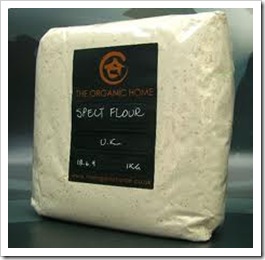Spelt flour
– or Triticum aestivum var. spelta – an ancient grain of the wheat family (and praised by the medieval sage St. Hildegard as being particularly suited to the sick and those of a weak constitution) is one of the more popular non-wheat flour alternatives now available.
Cultivated for centuries, the history of spelt goes back at least 7,000 years and it is believed to have been first grown in Eastern Europe and Iran. Falling out of favour – and becoming better known as a feed-grain for animals – spelt started being grown in Australia in 1988, after a farming couple from New South Wales heard about the revival of the spelt crop in Europe.
Nutty and slightly sweet in flavour it has a high protein and nutrition content, and is easier to digest than wheat – making it popular with health-enthusiasts and wheat sensitive individuals.
Four facts about spelt flour:
1. Spelt flour is significantly higher in B vitamins than wheat flour, especially niacin and riboflavin.
2. Spelt flour is a good source of fibre and has one more gram of fibre per serving than whole wheat flour.
3. Spelt is a good source of iron, potassium, zinc and B vitamins.
4. Spelt flour can be used as an alternative to wheat flour in a number of baked goods.
References:
Biodistributors: Biodynamic and Organic Wholesalers of Tasmania
Living Strong: Nutritional Facts for Spelt FlourLiving Strong: Spelt Flour Nutritional Analysis
Baking Bites: What is Spelt Flour
Nourishing Traditions: Sally Fallon
~~~~~
PS. Inspired by what you’ve just read? Subscribe to the blog and never miss another post!



